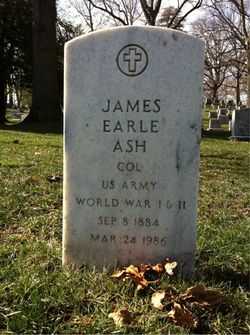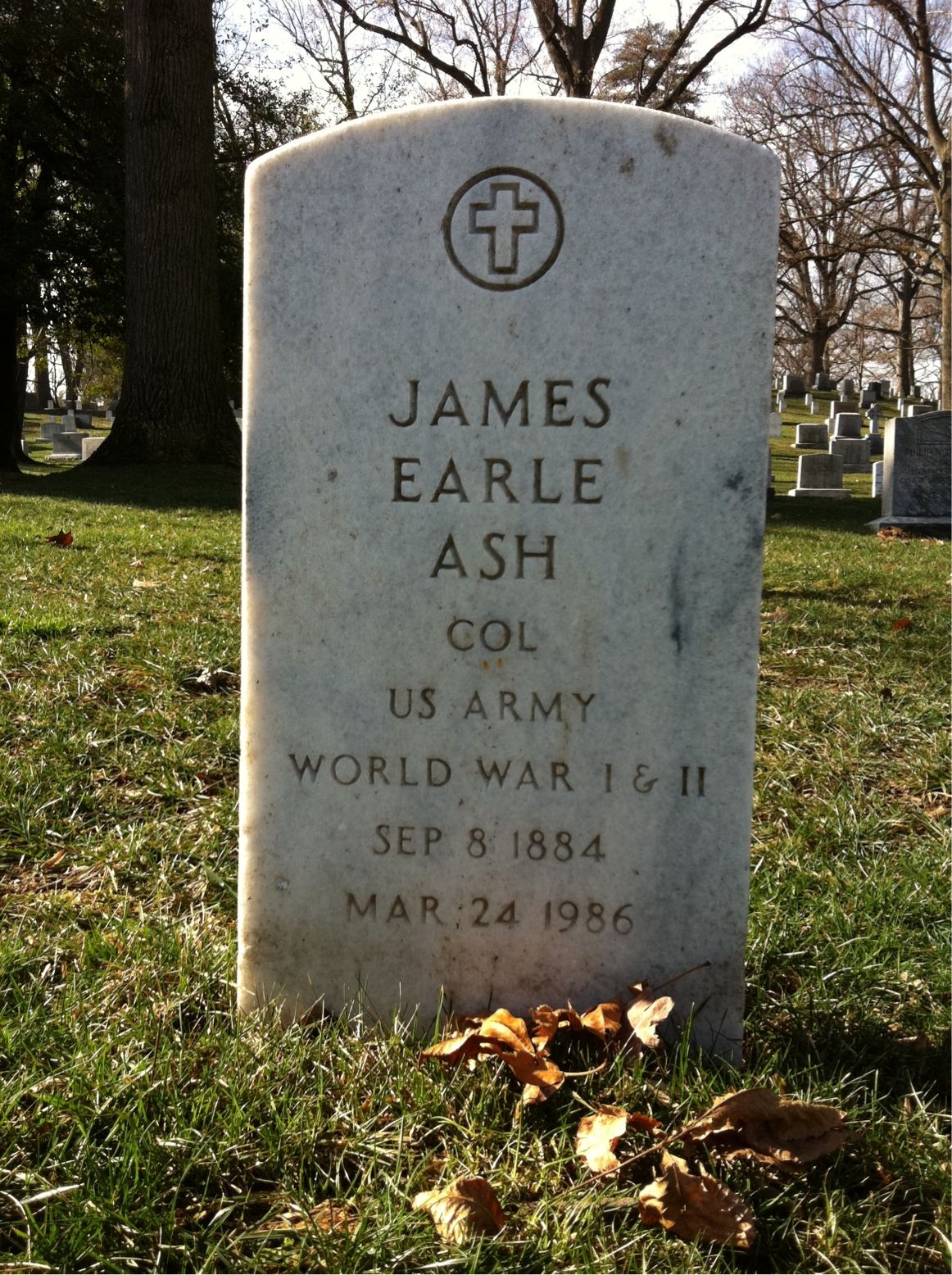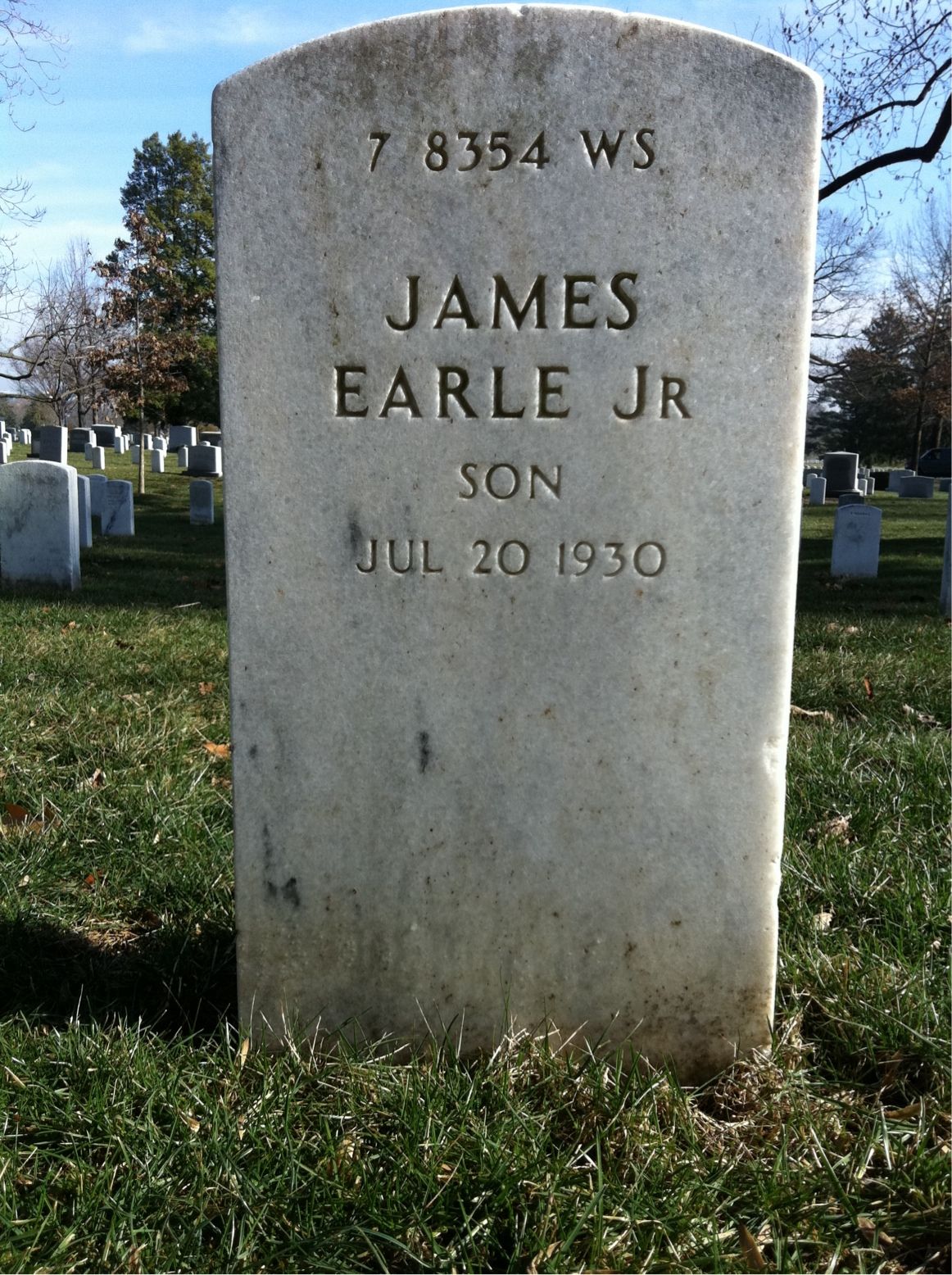His remarkable accomplishments included two terms as curator of the Army Medical Museum and one term as the first director of the Army Institute of Pathology.
He helped elevate the museum and institute to a position of prominence in the world of pathology, modernizing the institute's system for collection and review of unusual cases, developing a series of atlases that led to growth of subspecialties of pathology, and helping to inspire scores of military and civilian pathologists during their careers.
Ash was born on Sept. 8, 1884 in Philadelphia. In 1905 he obtained his medical degree from the University of Pennsylvania. He received advanced training for six years at Philadelphia-area hospitals, where he developed his interest in the field of pathology. Ash later studied in Vienna, Austria before returning to the United States in 1913 to teach for three years at Harvard University Medical School.
While at Harvard, Ash became interested in tropical diseases and in 1916 accepted a commission in the Medical Corps of the U.S. Army. He served in the Philippines and subsequent expertise in tropical medicine helped lead to reactivation of the Army Medical Research Board and publication of a report on sanitary conditions in the Bataan penninsula, later utilized for planning purposes by the U.S. Army.
Col. Ash, first director of the Armed Forces Institute of Pathology, at his desk in 1942Ash used his position as 15th curator of the Army Medical Museum from 1929 to 1931 and later as 20th curator from 1937 to 1946, to develop slide study sets, syllabuses, atlases, and fascicles as teaching tools. He also helped establish and expand pathology registries and to specialize a number of fields of pathology. During World War II, he developed the Army Medical Museum into a center of excellence for military and civilian pathologists, and his efforts did much to advance cooperation between the two groups. Ash finished his military career in 1947 as the first director of a new facility that would be known as the Armed Forces Institute of Pathology. As a tribute to Ash when he retired, an entire issue of "The Military Surgeon" was devoted to his career, and included a foreward from Surgeon General of the Army, Maj. Gen. Norman T. Kirk, attesting to Ash's "diligence, foresight, professional knowledge, and undeterred devotion to duty..."
He continued on as the first scientific director of the American Registry of Pathology from 1947 to 1949, and later served as chief of pathology for 12 years at Suburban Hospital in Bethesda, Md. In all, Ash spent 73 years devoted to the field of pathology. He died at the age of 101 on March 24, 1986 at his home in Bethesda.
-- obituary courtesy the National Museum of Health and Medicine
Academic Degrees
MD: University of Pennsylvania, Philadelphia, Pennsylvania, 1905
Academic Positions
1913 - 1916 Instructor in Pathology, Harvard Medical School
1947- 1948 Scientific Director, American Registry of Pathology
1948 Consultant Oscar B. Hunter Memorial Labs/Washington, DC Pathologist to Suburban Hospital, Bethesda, Maryland Consultant in pathology to Veterans Administration and AFIP and Arlington Hospital (Virginia) and Episcopal Eye, Ear and Throat Hospital/Washington D.C.
Military Service
Commissioned U.S. Army, 1916
Retired as Colonel, 1947
Military Assignments
1929 - 1931 Curator, Army Medical Museum
1937 - 1946 Curator, Army Medical Museum
1946 First Director, Armed Forces Institute of Pathology
Selected Career Highlights
Responsible for transforming the Army Medical Museum into the Army Institute of Pathology and expansion of the American Registry of Pathology activities. Development of closer relationships between the AFIP and the national groups of clinical medicine. During the war years it was a training center for war-time army pathologists. He was quiet, unassuming, and had no equal in his ability to imbue his staff with a devotion to duty and a desire to excel (and with a minimum of rules, regulations and red tape).
Key to the expansion of the educational and training materials in various clinical specialties. Largely responsible for the development of pathology registries. Brought about understanding between civilian and military pathologists. More than any other army medical officer elevated the standing of the army medical corps in the eyes of civilian colleagues.
The Ash Library, AFIP is named after him and his many contributions to the AFIP.
Published papers on bilateral renal cortical necrosis, epibulbar tumors, the laryngeal node, bladder tumors, pulmonary infarcts, adenomatoid tumors of the genital tract, laboratory methods of the US Army.
Published 3 Atlases: Otolaryngic Pathology, Pathology of Tropical Diseases and Ophthalmic Pathology (first edition with DeCoursey).
Published two fascicles: Bladder Tumors (with N. Friedman) and Tumors of the Upper Respiratory Tract (with Raum and Col. Beck).
Published several fascicles to accompany study sets of slides: Dermatology, GU Pathology, Tropical Diseases, Brain Tumors, Orthopedic Pathology, Neuropathology, Dental/oral pathology, as co-author with various members of the AFIP faculty during the war.
The Editors of The Military Surgeon issued a special number of the journal in honor of Col. Ash (1946).
A talented pianist and organist.
--The United States and Canadian Academy of Pathology
His remarkable accomplishments included two terms as curator of the Army Medical Museum and one term as the first director of the Army Institute of Pathology.
He helped elevate the museum and institute to a position of prominence in the world of pathology, modernizing the institute's system for collection and review of unusual cases, developing a series of atlases that led to growth of subspecialties of pathology, and helping to inspire scores of military and civilian pathologists during their careers.
Ash was born on Sept. 8, 1884 in Philadelphia. In 1905 he obtained his medical degree from the University of Pennsylvania. He received advanced training for six years at Philadelphia-area hospitals, where he developed his interest in the field of pathology. Ash later studied in Vienna, Austria before returning to the United States in 1913 to teach for three years at Harvard University Medical School.
While at Harvard, Ash became interested in tropical diseases and in 1916 accepted a commission in the Medical Corps of the U.S. Army. He served in the Philippines and subsequent expertise in tropical medicine helped lead to reactivation of the Army Medical Research Board and publication of a report on sanitary conditions in the Bataan penninsula, later utilized for planning purposes by the U.S. Army.
Col. Ash, first director of the Armed Forces Institute of Pathology, at his desk in 1942Ash used his position as 15th curator of the Army Medical Museum from 1929 to 1931 and later as 20th curator from 1937 to 1946, to develop slide study sets, syllabuses, atlases, and fascicles as teaching tools. He also helped establish and expand pathology registries and to specialize a number of fields of pathology. During World War II, he developed the Army Medical Museum into a center of excellence for military and civilian pathologists, and his efforts did much to advance cooperation between the two groups. Ash finished his military career in 1947 as the first director of a new facility that would be known as the Armed Forces Institute of Pathology. As a tribute to Ash when he retired, an entire issue of "The Military Surgeon" was devoted to his career, and included a foreward from Surgeon General of the Army, Maj. Gen. Norman T. Kirk, attesting to Ash's "diligence, foresight, professional knowledge, and undeterred devotion to duty..."
He continued on as the first scientific director of the American Registry of Pathology from 1947 to 1949, and later served as chief of pathology for 12 years at Suburban Hospital in Bethesda, Md. In all, Ash spent 73 years devoted to the field of pathology. He died at the age of 101 on March 24, 1986 at his home in Bethesda.
-- obituary courtesy the National Museum of Health and Medicine
Academic Degrees
MD: University of Pennsylvania, Philadelphia, Pennsylvania, 1905
Academic Positions
1913 - 1916 Instructor in Pathology, Harvard Medical School
1947- 1948 Scientific Director, American Registry of Pathology
1948 Consultant Oscar B. Hunter Memorial Labs/Washington, DC Pathologist to Suburban Hospital, Bethesda, Maryland Consultant in pathology to Veterans Administration and AFIP and Arlington Hospital (Virginia) and Episcopal Eye, Ear and Throat Hospital/Washington D.C.
Military Service
Commissioned U.S. Army, 1916
Retired as Colonel, 1947
Military Assignments
1929 - 1931 Curator, Army Medical Museum
1937 - 1946 Curator, Army Medical Museum
1946 First Director, Armed Forces Institute of Pathology
Selected Career Highlights
Responsible for transforming the Army Medical Museum into the Army Institute of Pathology and expansion of the American Registry of Pathology activities. Development of closer relationships between the AFIP and the national groups of clinical medicine. During the war years it was a training center for war-time army pathologists. He was quiet, unassuming, and had no equal in his ability to imbue his staff with a devotion to duty and a desire to excel (and with a minimum of rules, regulations and red tape).
Key to the expansion of the educational and training materials in various clinical specialties. Largely responsible for the development of pathology registries. Brought about understanding between civilian and military pathologists. More than any other army medical officer elevated the standing of the army medical corps in the eyes of civilian colleagues.
The Ash Library, AFIP is named after him and his many contributions to the AFIP.
Published papers on bilateral renal cortical necrosis, epibulbar tumors, the laryngeal node, bladder tumors, pulmonary infarcts, adenomatoid tumors of the genital tract, laboratory methods of the US Army.
Published 3 Atlases: Otolaryngic Pathology, Pathology of Tropical Diseases and Ophthalmic Pathology (first edition with DeCoursey).
Published two fascicles: Bladder Tumors (with N. Friedman) and Tumors of the Upper Respiratory Tract (with Raum and Col. Beck).
Published several fascicles to accompany study sets of slides: Dermatology, GU Pathology, Tropical Diseases, Brain Tumors, Orthopedic Pathology, Neuropathology, Dental/oral pathology, as co-author with various members of the AFIP faculty during the war.
The Editors of The Military Surgeon issued a special number of the journal in honor of Col. Ash (1946).
A talented pianist and organist.
--The United States and Canadian Academy of Pathology
Gravesite Details
AR United States Army
Family Members
Sponsored by Ancestry
Advertisement
Explore more
Sponsored by Ancestry
Advertisement





